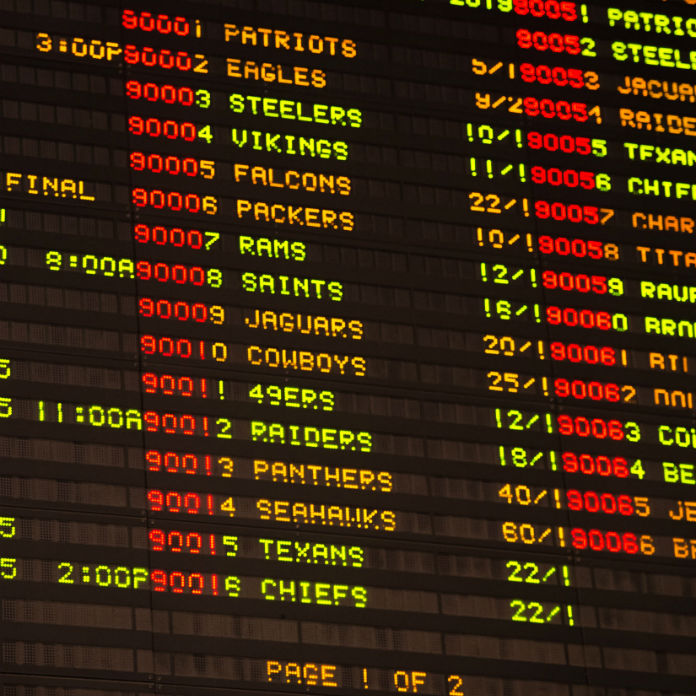Some Important Points Regarding Spread Betting on Sports
Spread betting was created to help even the playing field in sports wagering. In most contests, there’s a favorite and an underdog, and more times than not, the favorite will win. Of course, that’s not always the case, but often the team that is supposed to win does and most people will bet on that team. The spread was invented by bookkeepers to neutralize this phenomenon and to encourage bets on both sides.

Minus Spread Betting Calculator
Cover: The betting result on a point-spread wager. For a favorite to cover, it has to win by more than the spread; an underdog covers by winning outright or losing by less than the spread.

- The minus sign shows you which team is favored. When you bet on the favorite you get worse payout odds on your bet since they’re more likely to win. The team with a negative number (like -110) is the favorite. The number next to the minus sign is the amount you must bet to win $100 in profit. If the number is -110, you must bet $110 to win $100.
- Sports Betting Odds Explained - Most are completely confused when looking at betting lines for the first time. Loot explains what all the plus and minus signs signify and more! Vigorish Explained - There is a misconception in sports betting that one only has to hit 50% of their bets to break even. Sometimes we forget about the house edge.
- A betting line is another terminology for point spread, which is tied to the outcome of the event. It is a forecasted prediction of how many points an anticipated stronger team will win by against a weaker team. In the betting world the stronger team is referred to as the favorite, and the weaker team is referred to as the underdog.
- Spread betting is any of various types of wagering on the outcome of an event where the pay-off is based on the accuracy of the wager, rather than a simple 'win or lose' outcome, such as fixed-odds (or money-line) betting or parimutuel betting.

The basics of spread betting were in full force in Super Bowl XLIII when the Pittsburgh Steelers met the Arizona Cardinals. The Steelers took the game by a score of 27- 23. But if you bet on Pittsburgh against the spread, you lost. The Steelers were at minus-seven, which meant for bettors that picked them, the team from the Steel City had to win by more than seven for their wager to payoff.
The smart money was on the Cardinals who were at plus-seven. With spread betting in force, the Cards got seven points on top off their score in the actual game. Anyone who put cash on the Cards would have won their bet as long as Arizona won outright or lost by less than seven.
The final score of Super Bowl XLIII may have been Steelers 27 and Cardinals 23. But for bettors, bookmakers and handicappers, the score that determined which bet paid and which didn’t was Arizona 30 and Pittsburgh 27.
Minus Spread Betting Meaning
Spread Betting Explained

Sometimes sports spread betting will utilize a half-point spread. In other words, you may see a team listed at plus-6 ½ or minus-3 ½ . That half-point negates any chance that there will be a “push.” A push occurs when two teams tie due to the spread. The seven-point spread in Super Bowl XLIII could have ended with a push. If the score had been Steelers 30 and Cards 23, then the plus-seven for Arizona would have made the spread score 30-30, which means there would have been “no action;” that is no winner and no loser. All bets would have been off and all money would have been returned to the bettors.
In spread sports betting, the payout is considered to be even money (1:1), but it’s not really. Every wager carries a commission, which is known by many names, including “vig” or “vigorish.” The commission paid by the bettor is 4.545%. If the payout odds were truly 1:1, then an $11 wager would result in a $22 return. But that doesn’t happen in spread betting. An $11 bet pays $21, with the other buck, which goes to the bookmaker, being the vigorish. The real odds are 1:0.954.
There are many factors to consider when playing the spread. Sports handicappers will use a number of methods to make their sports picks against the point spread. Some of these include how the teams have done against one another recently? Did one club blow out the other or were the teams fairly evenly matched? Is there a true home field advantage or does one team do exceptionally well on the road? Will the weather be a factor, limiting offense or defense?

Injuries that could impact the contest also need to be studied. These are especially important if they happen after the spread has been set and the spread hasn’t been readjusted to reflect the influence of the injury. As an example, if Kurt Warner had gone down with an injury the day before Super Bowl XLIII, then Pittsburgh at minus-seven would have looked like a very good bet. The odds would have changed if that had happened, but it takes anywhere from a minute to 24 hours for bookmakers to adjust the spread depending on how public the injury is. Taking old odds on the heels of breaking news can be very advantageous.
Minus Spread Betting Odds
The spread in sports betting is dictated by many factors. Learning to analyze the point spread in reference to what each team brings to the field is essential to success.